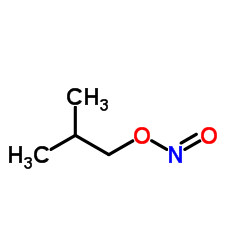Acute inhalation exposure to isobutyl nitrite causes nonspecific blood cell destruction.
L S Soderberg, J T Flick, J B Barnett
文献索引:Exp. Hematol. 24(5) , 592-6, (1996)
全文:HTML全文
摘要
Abuse of nitrite inhalants is widespread among male homosexuals and has been epidemiologically correlated with seropositivity to human immunodeficiency virus (HIV) and to Kaposi's sarcoma. These drugs may act as cofactors in AIDS if they compromise the ability to resist infection or tumor growth. We have previously reported that 14 daily 45-minute exposure to 900 ppm isobutyl nitrite in an inhalation chamber did compromise the immunocompetence of mice. We now report that a single 45-minute exposure produced a transient anemia. Erythrocyte counts, hemoglobin, and hematocrit levels were reduced by 7% but rebounded to above-normal levels 24 hours later. In vitro exposure of blood to isobutyl nitrite vapors did not lyse the cells but did induce Heinz body formation and increase their binding to macrophages. Thus, it is likely that the red cells were removed by phagocytic clearance not by direct lysis. Blood leukocyte numbers were also reduced following a single exposure to the inhalant, but the cell loss was delayed until 24 hours after exposure. Recovery of peripheral blood leukocytes 72 hours after exposure coincided with a reduction in spleen cellularity, suggesting that spleen cells were mobilized to replace lost blood leukocytes.
相关化合物
| 结构式 | 名称/CAS号 | 分子式 | 全部文献 |
|---|---|---|---|
 |
亚硝酸异丁酯
CAS:542-56-3 |
C4H9NO2 |
|
Vascular and hemodynamic differences between organic nitrate...
1997-01-01 [J. Pharmacol. Exp. Ther. 280(1) , 326-31, (1997)] |
|
Vibrational analysis of n-butyl, isobutyl, sec-butyl and ter...
2007-05-01 [Spectrochim. Acta. A. Mol. Biomol. Spectrosc. 67(1) , 178-87, (2007)] |
|
Inflammatory macrophage nuclear factor-kappaB and proteasome...
2001-04-01 [J. Leukoc. Biol. 69(4) , 639-44, (2001)] |
|
Isobutyl nitrite liberates nitric oxide which is not respons...
1998-01-01 [Adv. Exp. Med. Biol. 437 , 265-8, (1998)] |
|
Pharmacokinetics of a model organic nitrite inhalant and its...
2000-04-01 [Drug Metab. Dispos. 28(4) , 386-91, (2000)] |